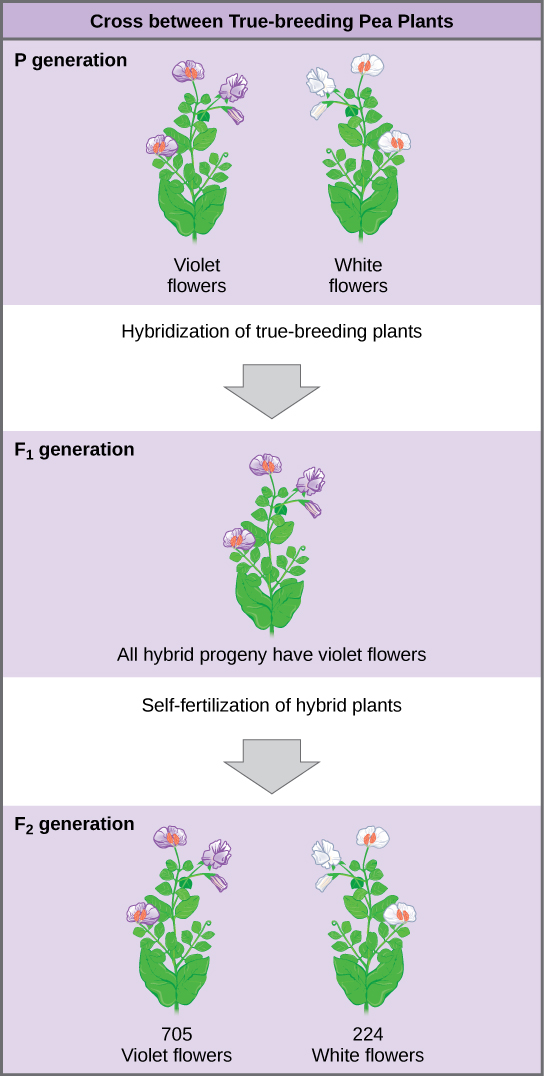12.1C: Mendelian Crosses
- Page ID
- 13258
- Identify Mendelian crosses
Mendelian Crosses
Mendel performed crosses, which involved mating two true-breeding individuals that have different traits. In the pea, which is a naturally self-pollinating plant, this is done by manually transferring pollen from the anther of a mature pea plant of one variety to the stigma of a separate mature pea plant of the second variety. In plants, pollen carries the male gametes (sperm) to the stigma, a sticky organ that traps pollen and allows the sperm to move down the pistil to the female gametes (ova) below. To prevent the pea plant that was receiving pollen from self-fertilizing and confounding his results, Mendel painstakingly removed all of the anthers from the plant’s flowers before they had a chance to mature.

Plants used in first-generation crosses were called P0, or parental generation one, plants. Mendel collected the seeds belonging to the P0 plants that resulted from each cross and grew them the following season. These offspring were called the F1, or the first filial (filial = offspring, daughter or son), generation. Once Mendel examined the characteristics in the F1generation of plants, he allowed them to self-fertilize naturally. He then collected and grew the seeds from the F1 plants to produce the F2, or second filial, generation. Mendel’s experiments extended beyond the F2 generation to the F3 and F4generations, and so on, but it was the ratio of characteristics in the P0−F1−F2 generations that were the most intriguing and became the basis for Mendel’s postulates.
Key Points
- Mendel carefully controlled his experiments by removing the anthers from the pea plants before they matured.
- First generation pea plants were called parental generation, P0, while the following generations were called filial, Fn, where n is the number of generations from P0.
- The ratio of characteristics in the P0−F1−F2 generations became the basis for Mendel’s postulates.
Key Terms
- filial: of a generation or generations descending from a specific previous one
- parental: of the generation of organisms that produce a hybrid


